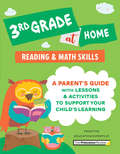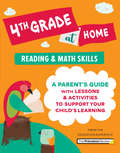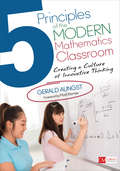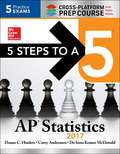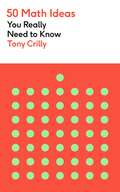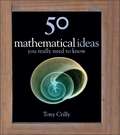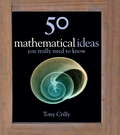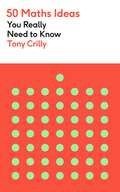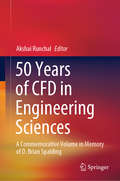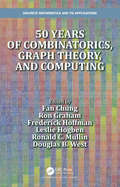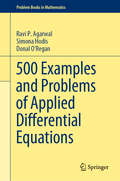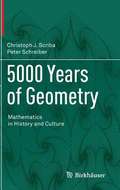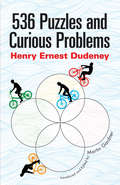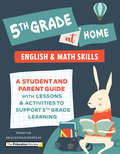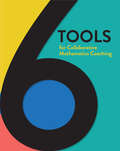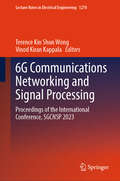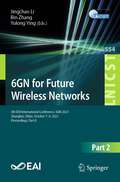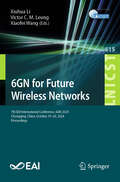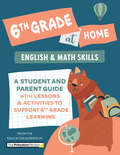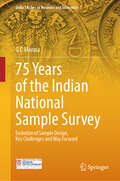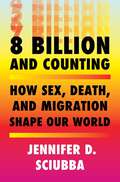- Table View
- List View
3rd Grade at Home: A Parent's Guide with Lessons & Activities to Support Your Child's Learning (Math & Reading Skills) (Learn at Home)
by The Princeton ReviewLearn at home with help from the education experts at The Princeton Review! 3RD GRADE AT HOME provides simple, guided lessons and activities that parents can use to help keep 3rd graders on track this year.Anxious about remote learning and hybrid schooling? Worried that the unique circumstances around coronavirus and education might keep your child from getting the help they need in class this year? Want to help support your child's schooling, but not sure where to start?You're not alone! 3RD GRADE AT HOME is a parent guide to supporting your child's learning, with help you can undertake from home. It provides: · Guided help for key 3rd grade reading and math topics· Skills broken into short, easy-to-accomplish lessons· Explanations for parents, plus independent question sets for kids· Fun at-home learning activities for each skill that use common household items· Parent tips, review sections, and challenge activities seeded throughout the bookThe perfect mix of parent guidance, practical lessons, and hands-on activities to keep kids engaged and up-to-date, 3RD GRADE AT HOME covers key grade-appropriate topics including:· early reading comprehension · context and understanding· fiction and nonfiction· event order· problem and solution· addition and subtraction· multiplication and division· fractions and decimals· shapes, symmetry, and patterns· probability... and more!
4th Grade at Home: A Parent's Guide with Lessons & Activities to Support Your Child's Learning (Math & Reading Skills) (Learn at Home)
by The Princeton ReviewLearn at home with help from the education experts at The Princeton Review! 4TH GRADE AT HOME provides simple, guided lessons and activities that parents can use to help keep 4th graders on track this year.Anxious about remote learning and hybrid schooling? Worried that the unique circumstances around coronavirus and education might keep your child from getting the help they need in class this year? Want to help support your child's schooling, but not sure where to start?You're not alone! 4TH GRADE AT HOME is a parent guide to supporting your child's learning, with help you can undertake from home. It provides: · Guided help for key 4th grade reading and math topics· Skills broken into short, easy-to-accomplish lessons· Explanations for parents, plus independent question sets for kids· Fun at-home learning activities for each skill that use common household items· Parent tips, review sections, and challenge activities seeded throughout the bookThe perfect mix of parent guidance, practical lessons, and hands-on activities to keep kids engaged and up-to-date, 4TH GRADE AT HOME covers key grade-appropriate topics including:· reading comprehension · context, main ideas, and details· plot and setting· cause and effect· addition and subtraction· multiplication and division· fractions and decimals· shapes, symmetry, and patterns· probability... and more!
5 Principles of the Modern Mathematics Classroom: Creating a Culture of Innovative Thinking (Corwin Mathematics Series)
by Gerald W. AungstStudents pursue problems they’re curious about, not problems they’re told to solve. Creating a math classroom filled with confident problem solvers starts by introducing challenges discovered in the real world, not by presenting a sequence of prescribed problems, says Gerald Aungst. In this groundbreaking book, he offers a thoughtful approach for instilling a culture of learning in your classroom through five powerful, yet straightforward principles: Conjecture, Collaboration, Communication, Chaos, and Celebration. Aungst shows you how to Embrace collaboration and purposeful chaos to help students engage in productive struggle, using non-routine and unsolved problems Put each chapter’s principles into practice through a variety of strategies, activities, and by incorporating technology tools Introduce substantive, lasting cultural changes in your classroom through a manageable, gradual shift in processes and behaviors Five Principles of the Modern Mathematics Classroom offers new ideas for inspiring math students by building a more engaging and collaborative learning environment. "Bravo! This book brings a conceptual framework for K-12 mathematics to life. As a parent and as the executive director of Edutopia, I commend Aungst for sharing his 5 principles. This is a perfect blend of inspiring and practical. Highly recommended!" Cindy Johanson, Executive Director, Edutopia George Lucas Educational Foundation "Aungst ignites the magic of mathematics by reminding us what makes mathematicians so passionate about their subject matter. Grounded in research, his work takes us on a journey into classrooms so that we may take away tips to put into practice today." Erin Klein, Teacher, Speaker, and Author of Redesigning Learning Spaces
5 Principles of the Modern Mathematics Classroom: Creating a Culture of Innovative Thinking (Corwin Mathematics Series)
by Gerald W. AungstStudents pursue problems they’re curious about, not problems they’re told to solve. Creating a math classroom filled with confident problem solvers starts by introducing challenges discovered in the real world, not by presenting a sequence of prescribed problems, says Gerald Aungst. In this groundbreaking book, he offers a thoughtful approach for instilling a culture of learning in your classroom through five powerful, yet straightforward principles: Conjecture, Collaboration, Communication, Chaos, and Celebration. Aungst shows you how to Embrace collaboration and purposeful chaos to help students engage in productive struggle, using non-routine and unsolved problems Put each chapter’s principles into practice through a variety of strategies, activities, and by incorporating technology tools Introduce substantive, lasting cultural changes in your classroom through a manageable, gradual shift in processes and behaviors Five Principles of the Modern Mathematics Classroom offers new ideas for inspiring math students by building a more engaging and collaborative learning environment. "Bravo! This book brings a conceptual framework for K-12 mathematics to life. As a parent and as the executive director of Edutopia, I commend Aungst for sharing his 5 principles. This is a perfect blend of inspiring and practical. Highly recommended!" Cindy Johanson, Executive Director, Edutopia George Lucas Educational Foundation "Aungst ignites the magic of mathematics by reminding us what makes mathematicians so passionate about their subject matter. Grounded in research, his work takes us on a journey into classrooms so that we may take away tips to put into practice today." Erin Klein, Teacher, Speaker, and Author of Redesigning Learning Spaces
5 Steps to A 5: AP Statistics 2017
by Corey Andreasen Duane C. Hinders Deanna Krause McdonaldThis logical and easy-to-follow instructional guide introduces an effective 5-step study plan to help students build the skills, knowledge, and test-taking confidence they need to reach their full potential. The book helps students master both multiple-choice and free-response questions and offers comprehensive answer explanations and sample responses. Written by an AP statistics teacher and an exam grader, this insider''s guide reflects the latest course syllabus and includes 5 full-length practice exams, plus the most up-to-date scoring information. The 5 Steps to a 5: AP Statistics 2017 effective 5-step plan breaks down test preparation into stages: 1. Set Up Your Study Program 2. Determine Your Test Readiness 3. Develop Strategies for Success 4. Develop the Knowledge You Need to Score High 5. Build Your Test-Taking Confidence.
50 Math Ideas You Really Need to Know (50 Ideas You Really Need to Know series)
by Tony CrillyIn a series of 50 accessible essays, Tony Crilly explains and introduces the mathematical laws and principles - ancient and modern, theoretical and practical, everyday and esoteric - that allow us to understand the world around us.From Pascal's triangle to money management, ideas of relativity to the very real uses of imaginary numbers, 50 Math Ideas is a complete introduction to the most important mathematical concepts in history.
50 Mathematical Ideas You Really Need to Know
by Tony CrillyJust the mention of mathematics is enough to strike fear into the hearts of many, yet without it, the human race couldn't be where it is today. By exploring the subject through its 50 key insights--from the simple (the number one) and the subtle (the invention of zero) to the sophisticated (proving Fermat's last theorem)--this book shows how mathematics has changed the way we look at the world around us.
50 Maths Ideas You Really Need to Know
by Tony CrillyJust the mention of mathematics is enough to strike fear into the hearts of many, yet without it, the human race couldn't be where it is today. By exploring the subject through its 50 key insights - from the simple (the number one) and the subtle (the invention of zero) to the sophisticated (proving Fermat's last theorem) - this book shows how mathematics has changed the way we look at the world around us.
50 Maths Ideas You Really Need to Know (50 Ideas You Really Need to Know series)
by Tony CrillyJust the mention of mathematics is enough to strike fear into the hearts of many, yet without it, the human race couldn't be where it is today. By exploring the subject through its 50 key insights - from the simple (the number one) and the subtle (the invention of zero) to the sophisticated (proving Fermat's last theorem) - this book shows how mathematics has changed the way we look at the world around us.
50 Maths Ideas You Really Need to Know (50 Ideas You Really Need to Know series)
by Tony CrillyIn a series of 50 accessible essays, Tony Crilly explains and introduces the mathematical laws and principles -ancient and modern, theoretical and practical, everyday and esoteric - that allow us to understand the world around us.From Pascal's triangle to money management, ideas of relativity to the very real uses of imaginary numbers, 50 Maths Ideas is a complete introduction to the most important mathematical concepts in history.
50 Maths Ideas You Really Need to Know (50 Ideas You Really Need to Know series)
by Tony CrillyIn a series of 50 accessible essays, Tony Crilly explains and introduces the mathematical laws and principles-ancient and modern, theoretical and practical, everyday and esoteric-that allow us to understand the world around us.From Pascal's triangle to money management, ideas of relativity to the very real uses of imaginary numbers, 50 Math Ideas is a complete introduction to the most important mathematical concepts in history.
50 Years of CFD in Engineering Sciences: A Commemorative Volume in Memory of D. Brian Spalding
by Akshai RunchalProf. D. Brian Spalding, working with a small group of students and colleagues at Imperial College, London in the mid-to late-1960’s, single-handedly pioneered the use of Computational Fluid Dynamics (CFD) for engineering practice.This book brings together advances in computational fluid dynamics in a collection of chapters authored by leading researchers, many of them students or associates of Prof. Spalding. The book intends to capture the key developments in specific fields of activity that have been transformed by application of CFD in the last 50 years. The focus is on review of the impact of CFD on these selected fields and of the novel applications that CFD has made possible. Some of the chapters trace the history of developments in a specific field and the role played by Spalding and his contributions. The volume also includes a biographical summary of Brian Spalding as a person and as a scientist, as well as tributes to Brian Spalding by those whose life was impacted by his innovations. This volume would be of special interest to researchers, practicing engineers, and graduate students in various fields, including aerospace, energy, power and propulsion, transportation, combustion, management of the environment, health and pharmaceutical sciences.
50 years of Combinatorics, Graph Theory, and Computing (Discrete Mathematics and Its Applications)
by Fan Chung, Ron Graham, Frederick Hoffman, Leslie Hogben, Ronald C. Mullin and Douglas B. West50 Years of Combinatorics, Graph Theory, and Computing advances research in discrete mathematics by providing current research surveys, each written by experts in their subjects. The book also celebrates outstanding mathematics from 50 years at the Southeastern International Conference on Combinatorics, Graph Theory & Computing (SEICCGTC). The conference is noted for the dissemination and stimulation of research, while fostering collaborations among mathematical scientists at all stages of their careers. The authors of the chapters highlight open questions. The sections of the book include: Combinatorics; Graph Theory; Combinatorial Matrix Theory; Designs, Geometry, Packing and Covering. Readers will discover the breadth and depth of the presentations at the SEICCGTC, as well as current research in combinatorics, graph theory and computer science.Features: Commemorates 50 years of the Southeastern International Conference on Combinatorics, Graph Theory & Computing with research surveys Surveys highlight open questions to inspire further research Chapters are written by experts in their fields Extensive bibliographies are provided at the end of each chapter
500 Examples and Problems of Applied Differential Equations (Problem Books in Mathematics)
by Ravi P. Agarwal Donal O’Regan Simona HodisThis book highlights an unprecedented number of real-life applications of differential equations together with the underlying theory and techniques. The problems and examples presented here touch on key topics in the discipline, including first order (linear and nonlinear) differential equations, second (and higher) order differential equations, first order differential systems, the Runge–Kutta method, and nonlinear boundary value problems. Applications include growth of bacterial colonies, commodity prices, suspension bridges, spreading rumors, modeling the shape of a tsunami, planetary motion, quantum mechanics, circulation of blood in blood vessels, price-demand-supply relations, predator-prey relations, and many more.Upper undergraduate and graduate students in Mathematics, Physics and Engineering will find this volume particularly useful, both for independent study and as supplementary reading. While many problems can be solved at the undergraduate level, a number of challenging real-life applications have also been included as a way to motivate further research in this vast and fascinating field.
5000 Years of Geometry
by Christoph J. Scriba Peter Schreiber Jana SchreiberThe present volume provides a fascinating overview of geometrical ideas and perceptions from the earliest cultures to the mathematical and artistic concepts of the 20th century. It is the English translation of the 3rd edition of the well-received German book “5000 Jahre Geometrie,” in which geometry is presented as a chain of developments in cultural history and their interaction with architecture, the visual arts, philosophy, science and engineering. <P><P> Geometry originated in the ancient cultures along the Indus and Nile Rivers and in Mesopotamia, experiencing its first “Golden Age” in Ancient Greece. Inspired by the Greek mathematics, a new germ of geometry blossomed in the Islamic civilizations. Through the Oriental influence on Spain, this knowledge later spread to Western Europe. Here, as part of the medieval Quadrivium, the understanding of geometry was deepened, leading to a revival during the Renaissance. Together with parallel achievements in India, China, Japan and the ancient American cultures, the European approaches formed the ideas and branches of geometry we know in the modern age: coordinate methods, analytical geometry, descriptive and projective geometry in the 17th an 18th centuries, axiom systems, geometry as a theory with multiple structures and geometry in computer sciences in the 19th and 20th centuries. <P><P> Each chapter of the book starts with a table of key historical and cultural dates and ends with a summary of essential contents of geometry in the respective era. Compelling examples invite the reader to further explore the problems of geometry in ancient and modern times. The book will appeal to mathematicians interested in Geometry and to all readers with an interest in cultural history.
536 Puzzles and Curious Problems
by Martin Gardner Henry E. DudeneyFor two decades, self-taught mathematician Henry E. Dudeney wrote a puzzle page, "Perplexities," for The Strand Magazine. Martin Gardner, longtime editor of Scientific American's mathematical games column, hailed Dudeney as "England's greatest maker of puzzles," unsurpassed in the quantity and quality of his inventions. This compilation of Dudeney's long-inaccessible challenges attests to the puzzle-maker's gift for creating witty and compelling conundrums. This treasury of intriguing puzzles begins with a selection of arithmetical and algebraical problems, including challenges involving money, time, speed, and distance. Geometrical problems follow, along with combinatorial and topological problems that feature magic squares and stars, route and network puzzles, and map coloring puzzles. The collection concludes with a series of game, domino, match, and unclassified puzzles. Solutions for all 536 problems are included, and charming drawings enliven the book.
5th Grade at Home: A Student and Parent Guide with Lessons and Activities to Support 5th Grade Learning (Math & English Skills) (Learn at Home)
by The Princeton Review5TH GRADE AT HOME offers simple, guided lessons and activities that students and their parents can use to help keep grade-appropriate English and math skills on track.With the perfect mix of practical lessons and hands-on activities, the Learn at Home series helps keep kids engaged and up-to-date—no matter where class is held. Written to bolster independent learning, this student-centric workbook includes parent tips and simple support to help keep kids&’ education on track. • Guided help for key 5th grade English and math topics • Skills broken into short, easy-to-accomplish lessons • Modules designed to encourage students to dive in, explore, and engage in interactive learning • Fun at-home learning activities using common household items • Parent tips to contextualize lessons and help assist your child 5th Grade at Home covers key grade-appropriate English and math topics such as: • grammar • vocabulary • reading comprehension • writing • number families & lines • multiplication & divison • fractions & ratios • factors & primes • time, distance, and money problems... and more!
6 Tools for Collaborative Mathematics Coaching
by Nicora PlacaIn 6 Tools for Collaborative Mathematics Coaching , Nicora Placa lays out a clear path to help you become a trusted and effective math coach. Her 6 Tools- are flexible structures that you and your colleagues can use to learn together: Building Teams: Fostering a Learning Community Student Interviews: Learning to Listen Visiting Classrooms: Developing Your Lens Learning Walks: Focusing the Team on Students' Thinking Rehearsing Routines: Practicing with Colleagues Lesson Study: Learning Collectively with Voice, Choice, and Agency In this easy-to-use, practical guide, Placa introduces each of the 6 Tools with classroom vignettes, step-by-step guidelines for rollout, connections to the literature, resources for further research, planning templates, and opportunities for you to adapt the tool for your particular context. Whether you're a new coach who loves teaching math to children but is new to adult education, or a more experienced coach who is looking for new strategies to engage your teams, 6 Tools for Collaborative Mathematics Coaching can help you create learning opportunities that honor teachers as professionals. With a collaborative coaching approach, you can improve teaching and learning across your school and for all your students.There's so much to love about how 6 Tools is constructed. --Elham Kazemi
6G Communications Networking and Signal Processing: Proceedings of the International Conference, SGCNSP 2023 (Lecture Notes in Electrical Engineering #1270)
by Terence Kin Shun Wong Vinod Kiran KappalaThis book includes peer-reviewed papers of the International Conference on 6G Communications Networking and Signal Processing-SGCNSP 2023. This book focuses on conceptual frameworks that help understand the basics of electronics, electrical, and communication. It also provides an overview of the upcoming advanced technologies supporting 6G signal processing, communication systems and networks, mobile and wireless networks, and RF and optical communication. This book is useful for undergraduate and postgraduate students and research scholars.
6GN for Future Wireless Networks: 6th EAI International Conference, 6GN 2023, Shanghai, China, October 7-8, 2023, Proceedings, Part I (Lecture Notes of the Institute for Computer Sciences, Social Informatics and Telecommunications Engineering #553)
by Bin Zhang Jingchao Li Yulong YingThis 2-volume set constitutes the proceedings of the 6th EAI International Conference on 6GN for Future Wireless Networks, 6GN 2023, held in Shanghai, China, in October 7-8, 2023. The 60 full papers were selected from 151 submissions and present the state of the art and practical applications of 6G technologies. The papers are arranged thematically in tracks as follows: intelligent systems; big data mining, D2D communication, security and privacy for 6G networks; artificial intelligent techniques for 6G networks; power and energy systems I; power and energy system; power and energy systems; image, video, and signal processing; image, video, and signal processing & software engineering; communications systems and networking & control and automation systems; computer systems and applications.
6GN for Future Wireless Networks: 6th EAI International Conference, 6GN 2023, Shanghai, China, October 7-8, 2023, Proceedings, Part II (Lecture Notes of the Institute for Computer Sciences, Social Informatics and Telecommunications Engineering #554)
by Bin Zhang Jingchao Li Yulong YingThis 2-volume set constitutes the proceedings of the 6th EAI International Conference on 6GN for Future Wireless Networks, 6GN 2023, held in Shanghai, China, in October 7-8, 2023.The 60 full papers were selected from 151 submissions and present the state of the art and practical applications of 6G technologies. The papers are arranged thematically in tracks as follows: intelligent systems; big data mining, D2D communication, security and privacy for 6G networks; artificial intelligent techniques for 6G networks; power and energy systems I; power and energy system; power and energy systems; image, video, and signal processing; image, video, and signal processing & software engineering; communications systems and networking & control and automation systems; computer systems and applications.
6GN for Future Wireless Networks: 7th EAI International Conference, 6GN 2024, Chongqing, China, October 19–20, 2024, Proceedings (Lecture Notes of the Institute for Computer Sciences, Social Informatics and Telecommunications Engineering #615)
by Victor C. M. Leung Xiaofei Wang Xiuhua LiThis volume set constitutes the proceedings of the 7th EAI International Conference on 6GN for Future Wireless Networks, 6GN 2024, held in Chongqing, China, in October 19-20, 2024. The 18 papers included in these proceedings were carefully reviewed and selected from50 submissions.They focus on the following topical sections such as Wireless Control and Network Optimization; Edge Computing and Resource Allocation; Intelligent Systems and Simulation; Artificial Intelligence and Digital Economy.
6th Grade at Home: A Student and Parent Guide with Lessons and Activities to Support 6th Grade Learning (Math & English Skills) (Learn at Home)
by The Princeton Review6th Grade at Home offers simple, guided lessons and activities that students and their parents can use to help keep grade-appropriate English and math skills on track. With the perfect mix of practical lessons and hands-on activities, the Learn at Home series helps keep kids engaged and up-to-date—no matter where class is held. Written to bolster independent learning, this student-centric workbook includes parent tips and simple support to help keep kids&’ education on track. • Guided help for key 6th grade English and math topics • Skills broken into short, easy-to-accomplish lessons • Modules designed to encourage students to dive in, explore, and engage in interactive learning • Fun at-home learning activities using common household items • Parent tips to contextualize lessons and help assist your child 6th Grade at Home covers key grade-appropriate English and math skills including: • reading comprehension • writing, essays, and literary elements • major parts of speech • vocabulary, grammar, and editing • fractions, percents, ratios, and proportions • mean, median & mode • early algebra • equations & inequalities • graph literacy and more!
75 Years of the Indian National Sample Survey: Evolution of Sample Design, Key Challenges and Way Forward (India Studies in Business and Economics)
by G C MannaThis book gives an overview of the Indian National Sample Survey (NSS) with a summarization of the salient features of the survey methodology adopted in the surveys, experiences gathered on the strengths and limitations of the data collected through the NSS and way forward to address some critical data gaps for further strengthening the NSS database. To fulfil the requirements of a diverse set of readers, the book also highlights the lessons gathered through some important pilot surveys that the NSS had conducted apart from containing a chapter on some global / best survey practices so that the book can truly be used as a reference material by the survey practitioners across the globe. It will also be of interest to a variety of other readers including the students, researchers, planners, and policymakers in addition to the survey organizations across the globe.
8 Billion and Counting: How Sex, Death, and Migration Shape Our World
by Jennifer D. SciubbaA provocative description of the power of population change to create the conditions for societal transformation. As the world nears 8 billion people, the countries that have led the global order since World War II are becoming the most aged societies in human history. At the same time, the world’s poorest and least powerful countries are suffocating under an imbalance of population and resources. In 8 Billion and Counting, political demographer Jennifer D. Sciubba argues that the story of the twenty-first century is less a story about exponential population growth, as the previous century was, than it is a story about differential growth—marked by a stark divide between the world’s richest and poorest countries. Drawing from decades of research, policy experience, and teaching, Sciubba employs stories and statistics to explain how demographic trends, like age structure and ethnic composition, are crucial signposts for future violence and peace, repression and democracy, poverty and prosperity. Although we have a diverse global population, demographic trends often follow predictable patterns that can help professionals across the corporate, nonprofit, government, and military sectors understand the global strategic environment. Through the lenses of national security, global health, and economics, Sciubba demonstrates the pitfalls of taking population numbers at face value and extrapolating from there. Instead, she argues, we must look at the forces in a society that amplify demographic trends and the forces that dilute them, particularly political institutions, or the rules of the game. She shows that the most important skills in demographic analysis are naming and being aware of your preferences, rethinking assumptions, and asking the right questions. Provocative and engrossing, 8 Billion and Counting is required reading for business leaders, policy makers, and anyone eager to anticipate political, economic, and social risks and opportunities. A deeper understanding of fertility, mortality, and migration promises to point toward the investments we need to make today to shape the future we want tomorrow.
